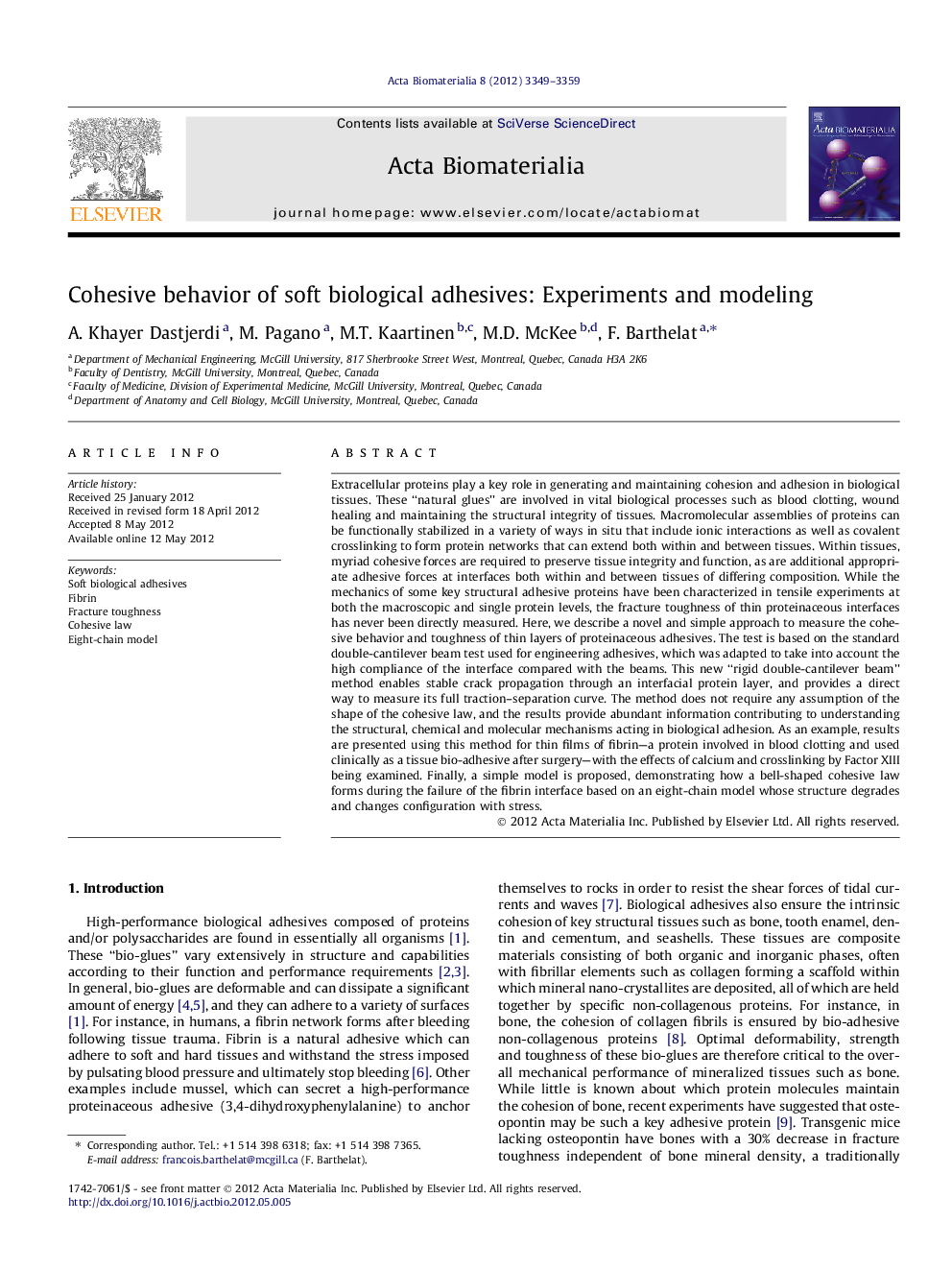| کد مقاله | کد نشریه | سال انتشار | مقاله انگلیسی | نسخه تمام متن |
|---|---|---|---|---|
| 608 | 52 | 2012 | 11 صفحه PDF | دانلود رایگان |

Extracellular proteins play a key role in generating and maintaining cohesion and adhesion in biological tissues. These “natural glues” are involved in vital biological processes such as blood clotting, wound healing and maintaining the structural integrity of tissues. Macromolecular assemblies of proteins can be functionally stabilized in a variety of ways in situ that include ionic interactions as well as covalent crosslinking to form protein networks that can extend both within and between tissues. Within tissues, myriad cohesive forces are required to preserve tissue integrity and function, as are additional appropriate adhesive forces at interfaces both within and between tissues of differing composition. While the mechanics of some key structural adhesive proteins have been characterized in tensile experiments at both the macroscopic and single protein levels, the fracture toughness of thin proteinaceous interfaces has never been directly measured. Here, we describe a novel and simple approach to measure the cohesive behavior and toughness of thin layers of proteinaceous adhesives. The test is based on the standard double-cantilever beam test used for engineering adhesives, which was adapted to take into account the high compliance of the interface compared with the beams. This new “rigid double-cantilever beam” method enables stable crack propagation through an interfacial protein layer, and provides a direct way to measure its full traction–separation curve. The method does not require any assumption of the shape of the cohesive law, and the results provide abundant information contributing to understanding the structural, chemical and molecular mechanisms acting in biological adhesion. As an example, results are presented using this method for thin films of fibrin—a protein involved in blood clotting and used clinically as a tissue bio-adhesive after surgery—with the effects of calcium and crosslinking by Factor XIII being examined. Finally, a simple model is proposed, demonstrating how a bell-shaped cohesive law forms during the failure of the fibrin interface based on an eight-chain model whose structure degrades and changes configuration with stress.
Journal: Acta Biomaterialia - Volume 8, Issue 9, September 2012, Pages 3349–3359